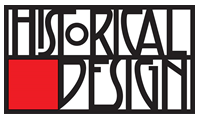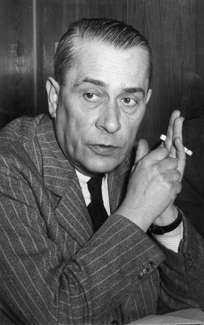Product Description
Oswald Haerdtl / J. C. Klinkosch Vienna Hand mirror c. 1940


OSWALD HAERDTL (1899-1959) Austria
J.C. KLINKOSCH Vienna
Hand mirror c. 1940
Handwrought and hand hammered silver in a contoured organic form, the top inset panel is turquoise and peach colored champleve enamel with silver cloisons in the form of a meandering branches.
Marks: J.C.K. (maker’s monogram), Klinkosch touch marks, 800 and toucan mark (Vienna silver standard marks)
For more information and other works see: Oswald Haerdtl 1899-1959, introd. Johannes Spalt (Vienna: Hochschule für angewandte Kunst, 1978); Oswald Haerdtl, Architekt und Designer (1899-1959), Adolphe Stiller (Salzburg: Verlag Anton Pustet, 2000); Art Nouveau and Art Deco Silver, Annelies Krekel-Aalberse (New York: Harry N. Abrams, 1989).
L: 10 1/2″
Price: $4,200
Haerdtl shared an architectural practice with Josef Hoffmann in the early 1930s, was later honored by the Austrian government to design the Austrian pavilion at the 1937 International Exhibition in Paris.
Oswald Haerdtl / J. C. Klinkosch Vienna Hand mirror c. 1940
GISELA VON FALKE (b. 1874) Austria
BERNDORFER METALLWARENFABRIK Berndorf, Austria
Covered box c. 1905
Hand hammered silver-plated box with a stylized floral motif and a riveted buttress handle design, mint green suede interior
Marks: Kayser (in a rectangular box with an arch encircling an eagle above)
For more information on Berndorfer Metallwarenfabrik see: Blühender Jugendstil – Österreich (Art Nouveau in Blossom – Austria), Firmen und Marken (Companies and Marks), Waltraud Neuwirth, II (Vienna: Selbstverlag Neuwirth, 1991), p. 221; Metallkunst, Kunst vom Jugendstil zur Moderne (1889-1939), Karl H. Bröhan (Berlin: Bröhan Museum, 1990) pp. 20-44.
W: 6 1/4″ x D: 5 1/2″ x H: 2″
Price: $4,800
CARL VAN VECHTEN (1880-1964) USA
Leontyne Price 1953
Signed: Leontyne Price as Bes, Porgy & Bess, XVII KK 20, May 19, 53 (in ink on back); PHOTOGRAPH BY CARL VAN VECHTEN, 101 CENTRAL PARK WEST, CANNOT BE REPRODUCED WITHOUT PERMISSION (ink stamp on back)
Size: H: 9 5/8” x W: 7 1/8”
